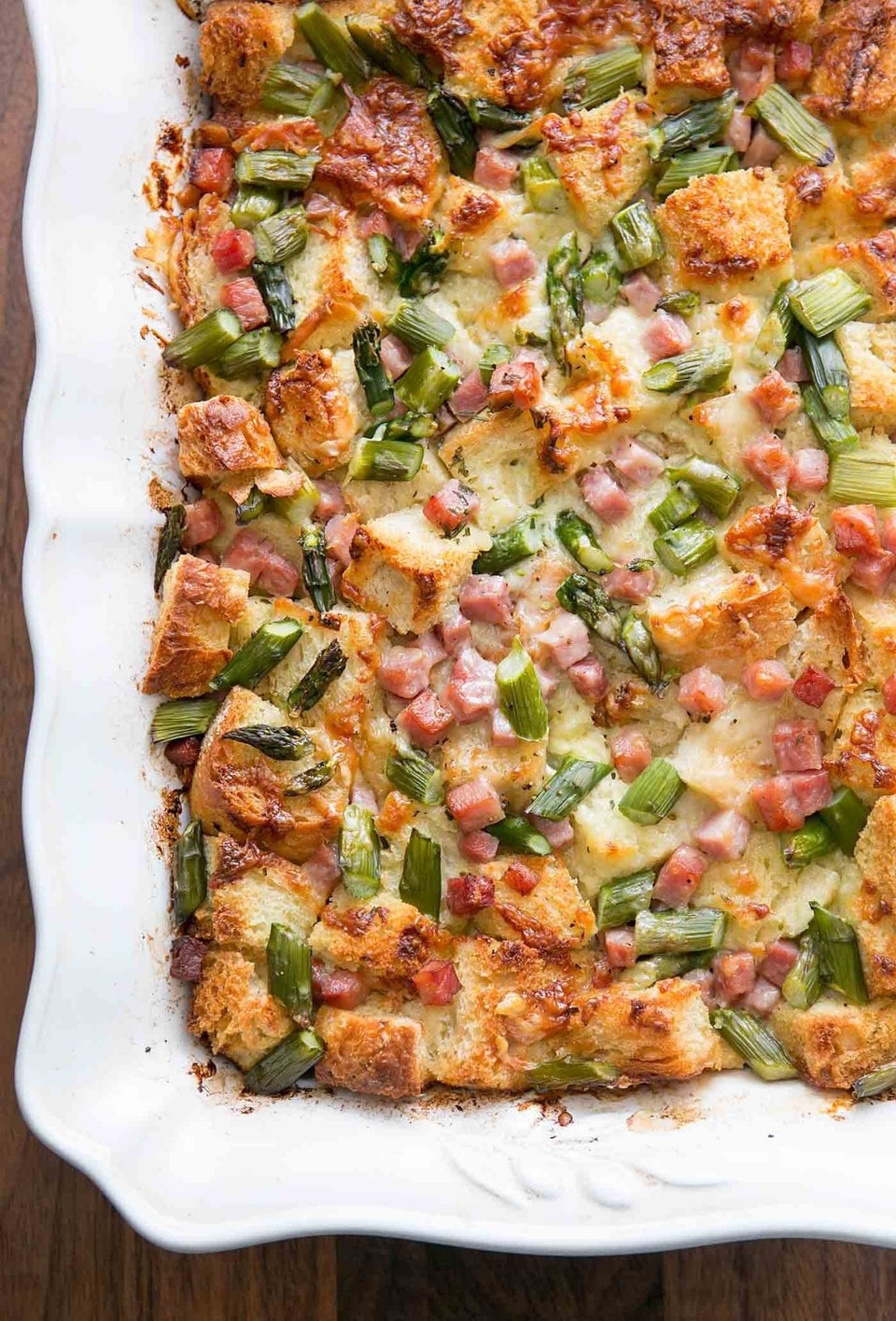Ham, whether it’s covered in pineapple rings or glistening with glaze, is a traditional centerpiece for Easter and other holiday celebrations. A large precooked ham also goes a long way, so it’s a great staple to have on hand as you’re under lockdown at home.
Even just half a ham can weigh as much as nine pounds. That means it yields lots of leftovers, which can be frozen or used in many different recipes.
“I think the point of ham is that it’s not just one meal,” said Frank Proto, director of culinary operations at the Institute of Culinary Education. “You can get a lot of stuff out of one ham. So, even if you just have a small group, you can easy get three or four meals out of one ham, which is a good thing.”
So much about cooking and eating ham, however, is personal preference. We asked meat experts to share tips for purchasing, cooking, flavoring and using leftover ham.
The shank vs. the butt end of the ham
The ham comes from the hind legs of a pig. A whole ham includes the butt and the shank, but most of the time what you purchase from the grocery store is just half of the ham, either the shank or the butt.
The shank is the lower part of the leg and has leaner meat, said Laura Pall, brand manager at Smithfield Foods. It’s typically what you see on a holiday table and contains one long bone, which makes carving easier. It’s also used to make ham hocks.
The butt comes from the upper part of the hind leg, and isn’t the same as the Boston butt, which refers to the front shoulder of the pig. It contains more fat than the shank, and its meat is more tender than a shank’s, with a richer flavor.
Hams aren’t always labeled butt or shank in the supermarket, so the best way to know which one you’re getting is to look at the shape, said Edward Ruff, president of Petit Jean Meats in Morrilton, Arkansas.
“The shank end of a ham will be more pointed and tapered, and the butt end will be quite a bit rounder,” Ruff said.
So, which one should you buy? That’s a personal preference, said Ruff, who is the fourth generation of his family to run Petit Jean Meats.
“The shank portion has some darker meat that, personally, I think is a little more flavorful,” he said. “My dad and I used to fight over the shank meat on the end of a ham every Christmas.”
Most hams just need to be reheated
Ham is easy to prepare. The ones available at the grocery store are usually smoked, cured or both, and usually already cooked, Proto said.
These hams really just need to be reheated. Proto suggests placing the ham in a roasting pan with a little water in the bottom to prevent the ham’s drippings from burning and to keep it from drying out.
“I leave it uncovered, because I want it to kind of brown a little,” he said. “If it starts to get too dark, you can always put a foil tent on it. That’s all I do. I really keep it simple.”
How hot to set your oven varies, but the U.S. Department of Agriculture recommends half bone-in hams roast for 18 to 24 minutes per pound. Hams should be reheated to a minimum of 145 degrees Fahrenheit.
Pall suggests baking cooked hams at 275 degrees for 12 to 15 minutes per pound. In addition to roasting, hams can be prepared in a crockpot, slow cooker, Dutch oven or smoker.
Ruff prefers roasting ham a little hotter, at 325 degrees for about 10 minutes per pound. He said one of the biggest mistakes people make is overcooking.
“Some cook it to death,” he said. “It dries it out, makes it tough, and it will make it taste saltier, because you’re taking moisture content out, which concentrates the salt into the meat fibers.”
You can glaze or add extra flavors, too
Smoked and cured hams are usually flavored with sugar, salt and maybe some other spices. You can also add a glaze or other flavors.
“There’s probably a thousand different ways you can find on Pinterest or in a cookbook to do a ham,” Ruff said.
Traditionally, ham has been flavored with whole cloves, pineapple slices and maraschino cherries, and glazed in brown sugar, Pall said.
“We encourage people to have fun in the kitchen,” she said. “The smoky, salty flavors of the meat pair really well with sweeter or spicier ingredients, so glaze recipes often include honey or molasses, apple cider, brown sugar, pepper and mustard.”
If you choose to glaze, wait to add it until about 15 to 20 minutes before taking the ham out of the oven to keep it from burning, Pall said.
Once the ham is fully reheated, let it rest for about 20 minutes before slicing to keep it juicy. Some hams come spiral-sliced and can be served immediately.
What to do with all those ham leftovers
Because hams can be big, Ruff said home cooks find them intimidating or worry about having too much left over.
Since social distancing is now required in so many places and you’re likely stocking your pantry and refrigerator, add ham to your grocery list. Leftover ham can be used in many different recipes, including sandwiches, frittatas, pastas and casseroles.
Proto said he likes to make ham salad by pulsing pieces of ham in a food processor and mixing in mayonnaise. Any bones and attached meat can be tossed into pea or lentil soups, or used to flavor beans.
Ham can be frozen for up to two months, according to the U.S. Department of Agriculture. Proto recommends portioning it out into slices or smaller chunks before freezing to make it easier to use.
For more ham recipes, check out the slideshow below.

